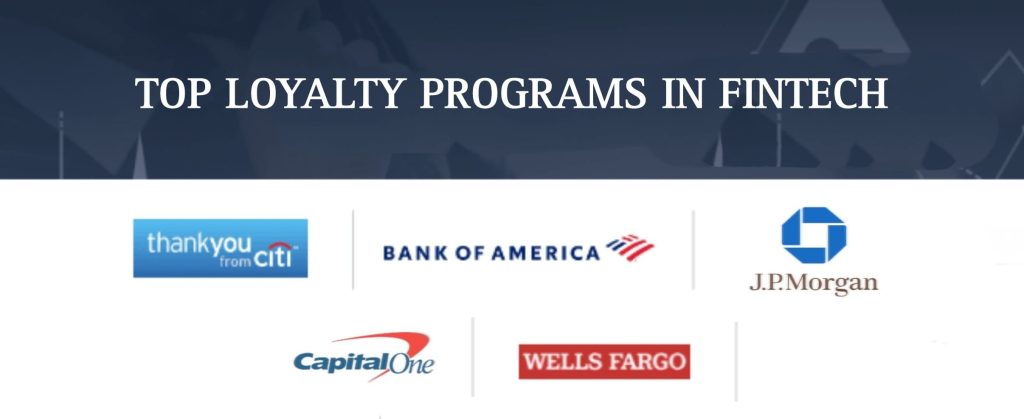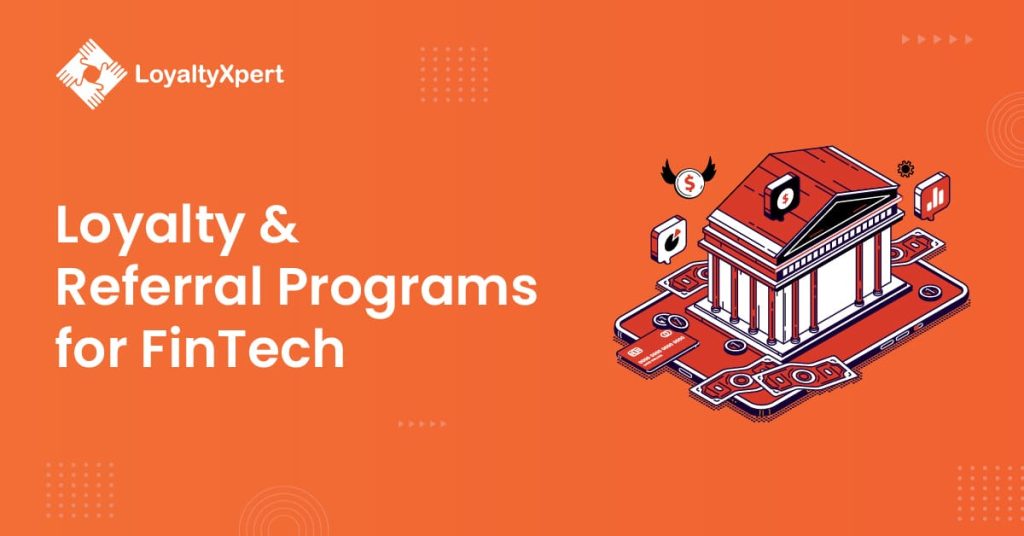How Loyalty Rewards Programs Can Drive Growth in FinTech? The term ‘fintech,’ an acronym for financial technology, was coined by noted American financial advisor Abraham Leon Bettinger in 1972. It denoted using digital technologies for a wide range of financial and wealth management services. Two decades later, the global fintech sector witnessed huge growth due to the boom of internet services and the digital tech revolution.
The sector, which stood at USD 7301.78 billion in 2020, is projected to grow at a compound annual growth rate (CAGR) of 27% and reach a market value of USD 31.5 trillion in 2026 (as per a report by Research and Markets.)
With exponential growth, aggressive competition followed. The sector was inundated with a lot of players. Each tried to outperform the others by offering innovative products and more lucrative offers. As a result, the global fintech sector became highly consolidated. It’s not surprising to see that just a handful of companies command a majority of the market share.
In such a scenario, designing and running sophisticated fintech loyalty programs can be immensely helpful to attract new customers and retain existing ones. This blog post discusses the various challenges faced by the global fintech sector and how well-designed loyalty programs can offset the challenges. It also discusses various suitable rewards that are perfect for the fintech sector.
Some Challenges Faced By The Fintech Industry (And How Loyalty Programs Can Help)
How Fintech Loyalty Programs Drive Rewards and Referrals Programs

1. High Customer Acquisition Costs (CAC)
The average customer acquisition cost (CAC) is one of the highest in the fintech sector. A study conducted by San Francisco-based marketing agency First Page Sage analyzed the average B2B CAC of 22 sectors and found that the fintech sector had the highest CAC of USD 1,450.
Various studies have found that the cost of acquiring a new customer is five to seven times more expensive than retaining an existing customer. Well-designed loyalty programs will not only enable fintech companies to attract new customers but also help them retain existing ones.
2. High Customer Churn Rate
The fintech sector, being an extremely competitive space, has a high customer attrition rate as well. A study published in The Economic Times found that almost three-quarters of new Fintech app users churn within seven days. The customer churn rate is also a useful metric to determine customer loyalty. A high churn rate is a sign of low retention.
That’s where fintech loyalty programs can help. By designing and running high-quality rewards programs, fintech companies can engage and retain more customers. That will automatically reduce their customer churn rate.
3. Rise in Cyber-Attacks, Security Breaches, And Loyalty Fraud
The fintech sector is more vulnerable to cyberattacks, data security breaches, as well as loyalty fraud than many other sectors. As per a report by GlobeNewswire, payment fraud attacks against fintech companies increased by 70% in 2021. Another report by Arkose Labs revealed that three fourth of total attacks on fintech companies were targeted at customer logins.
In such a scenario, fintech companies must invest in technologies that not only thwart cyberattacks and security breaches but also loyalty fraud. Some loyalty providers specialize in fraud-proof technologies and use highly advanced platforms to prevent loyalty fraud.
4. Lack of Tech Expertise
In the ever-changing world of finance, fintech companies must keep abreast with the latest trends and tech innovations in the domain. But some companies don’t have the right tech expertise to leverage emerging technologies to gain a competitive advantage. For example, at a time when a few leading fintech companies are leveraging AI and machine learning in their loyalty programs, many others are left behind.
In such a scenario, fintech companies should partner with the right tech solutions and loyalty software providers to have advanced loyalty programs in place. But when it comes to joining hands with the right service provider, fintech companies need to do their research and compare the features and prices of various service providers before making any buying decisions.
Reward That Works Best For Fintech Companies
There are many types of rewards. Some work like magic in one sector but aren’t as effective in another. The same holds for the fintech sector, in which some of the most effective rewards are:
1. Tiered loyalty
In the fintech sector, tiered loyalty programs work extremely well. As customers increase their spending or banking transactions, they move up the tiers and get exclusive experiences, flexible rewards, and VIP treatment.
2. Gamified loyalty programs
As per a study conducted by Snipp, brands that leveraged gamification reported a 47% increase in engagement and a 22% increase in brand loyalty. In the fintech sector, gamification can be extremely effective to attract new customers and address various challenges. Gamification empowers customers to interact and engage more with loyalty programs.
3. Rewards for spending money
In this reward program, customers earn rewards as per their spending power. Customers who buy using the company’s credit card or payment app, earn rewards as well as various other benefits such as points, vouchers, and many other items.
4. Customer behaviour-based programs
Fintech loyalty programs can reward customers for various behaviours such as making a credit card payment, depositing cash, upgrading their services, trading in the stock market, buying more financial products, and participating in a survey.
5. New account activation programs
Fintech companies can also create loyalty programs to encourage the activation of new checking and savings accounts, as well as:
- Signing up for a direct deposit
- Maintaining a minimum account balance
- Downloading mobile app
This will attract more customers to open up accounts with the company and incentivize the creation of new accounts.
6. Referral programs
Referral programs are extremely powerful for fintech companies to spread the word about their financial products or solutions. In this way, companies reward their customers with points, offers, or cash for referring friends and family.
7. Points for custom events
Be it a new customer referral, making a repeat purchase, or signing up for the monthly newsletter, this reward program provides points for any custom behaviour, event, or transaction.
Top Loyalty Programs in Fintech
Here are some of the best five examples of fintech reward programs to inspire you:

Everything considered.
The fintech industry is one of the fastest-rising sectors in the world. Apart from the positive outlook and massive growth potential, the industry also faces a lot of challenges. Fintech loyalty programs are a great way to offset the challenges and enhance customer loyalty. Furthermore, the right fintech loyalty programs can provide valuable insights into customer behaviour and enhance customer engagement.
At LoyaltyXpert, we have created high-quality fintech loyalty programs for some extremely reputable global fintech companies. If you are interested to know more about our fintech loyalty solutions, contact us today to Book a free demo.

